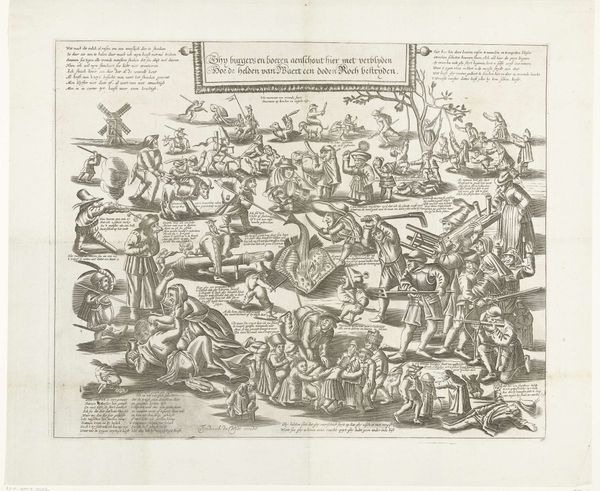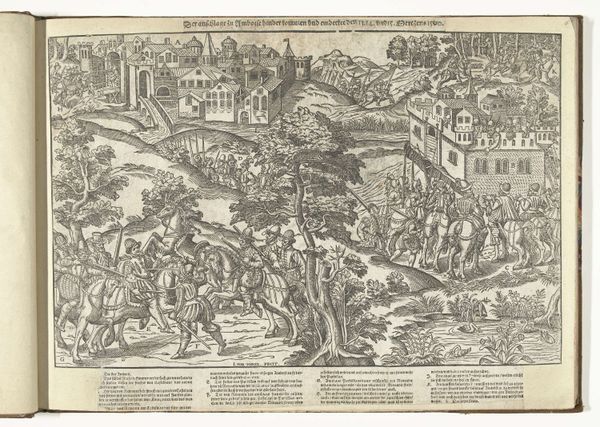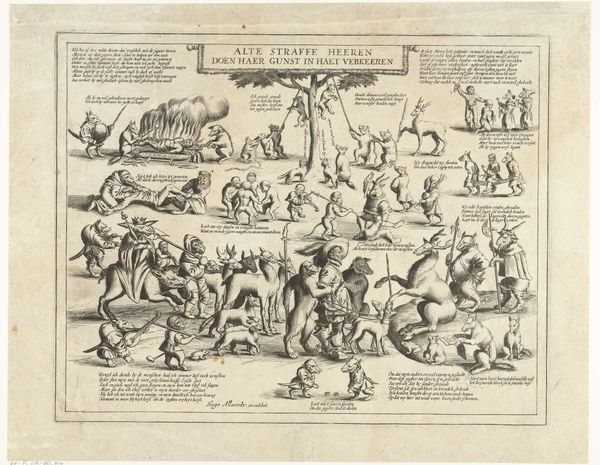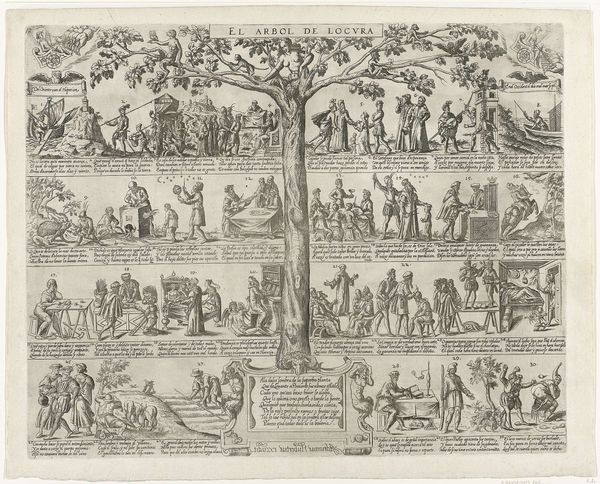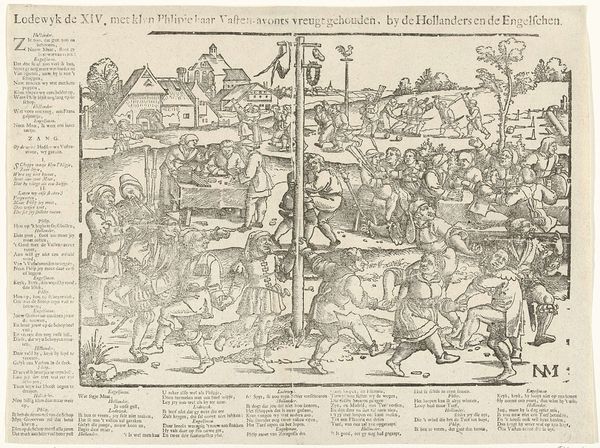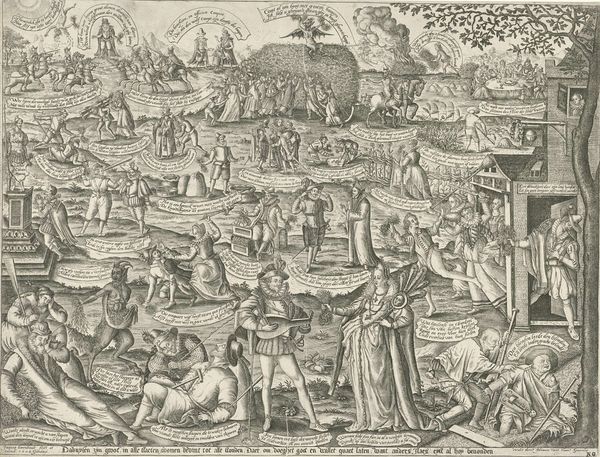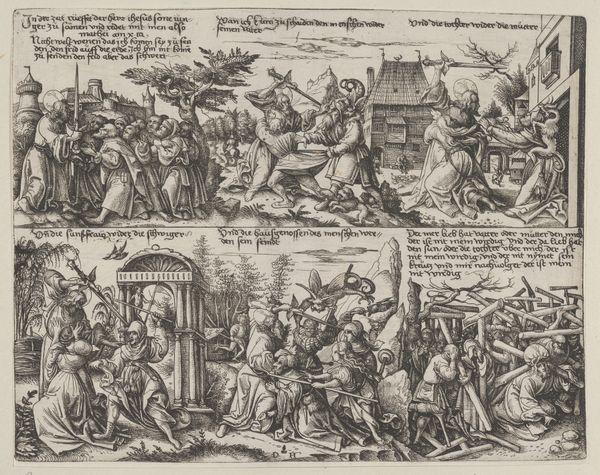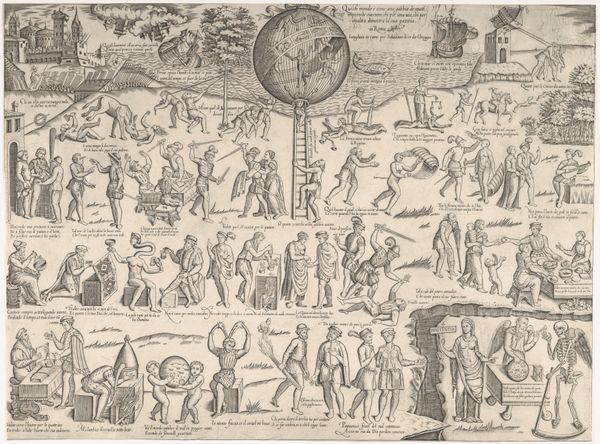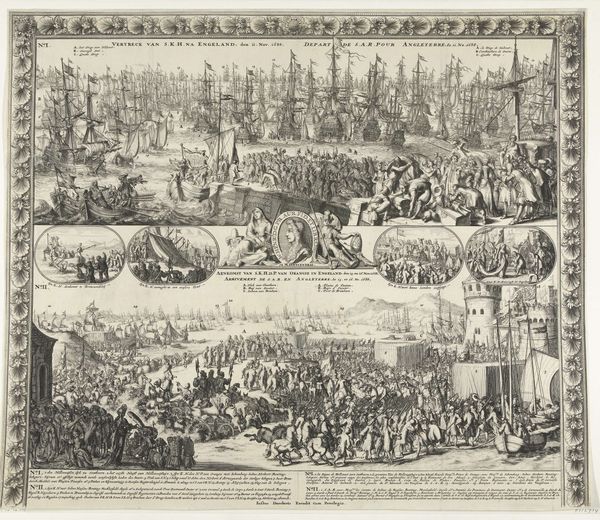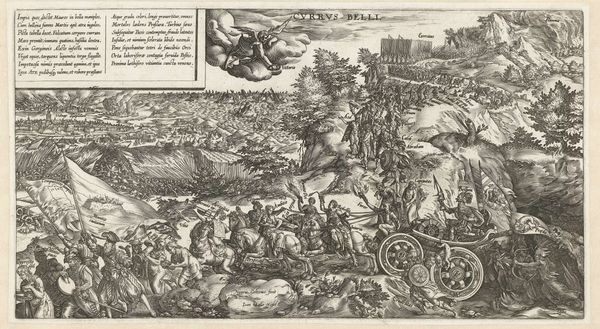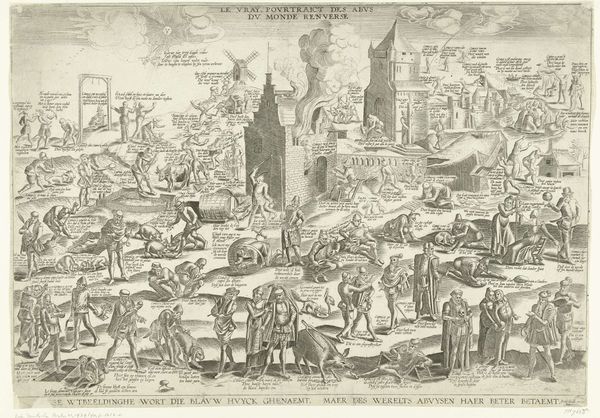
print, engraving
#
narrative-art
#
dutch-golden-age
# print
#
genre-painting
#
history-painting
#
engraving
Dimensions: height 376 mm, width 485 mm
Copyright: Rijks Museum: Open Domain
Curator: Immediately striking. An overwhelmingly intricate, busy scene teeming with miniature figures. It has the air of something both historical and satiric. Editor: You've pinpointed its complex nature well. This engraving, dating from somewhere between 1675 and 1720, is called “De Rogstekers van Weert, ca. 1650.” Though anonymous, it's housed at the Rijksmuseum. What’s interesting here is that it recounts an historical event with definite political and social undertones. Curator: It feels like we are peering into a carnival of societal disorder. The composition alone reflects this chaotic nature. There's very little in the way of classical ordering that normally prevails in history painting, no central protagonist, rather this flattened plane where we get lost in an interplay between actors. I also feel I see social criticism in their exaggerated expressions. Editor: Exactly. Look closer. This commemorates the Battle of Weert of 1648. The people of Weert, aided by local farmers, bravely repelled an attack by Spanish troops during the Eighty Years' War. Curator: So, what appears to be random chaos actually reflects a specific historical event viewed through, what I gather, amounts to propaganda of sorts. What might we interpret, then, from the absence of any recognizable heroes and how they appear less military in look. Note some look like clowns almost? Editor: Right. By representing the defenders of Weert with these exaggerated, even somewhat grotesque features, the artist conveys not necessarily literal accuracy but emphasizes the collective effort and the unexpected victory. They become symbolic, I feel, of Dutch resilience in a time of conflict. Moreover, by focusing on a seemingly minor battle, the print elevates the common person to a level of historical importance typically reserved for nobles. It challenges perceptions. Curator: So, we are looking at a visual rhetoric rooted in Dutch values—civic courage and resistance against foreign occupation! As we begin to tease this all apart, I think, it provides us insights into 17th century sociopolitical dynamics in the region and how history-writing can manifest in even anonymous art forms. Editor: Precisely. Even seemingly disorganized, busy imagery can speak volumes when situated in its context and through visual rhetoric!
Comments
No comments
Be the first to comment and join the conversation on the ultimate creative platform.

